| Femmes Fatales | Oct 10 2023 |

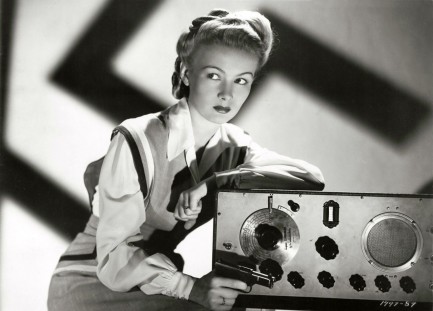
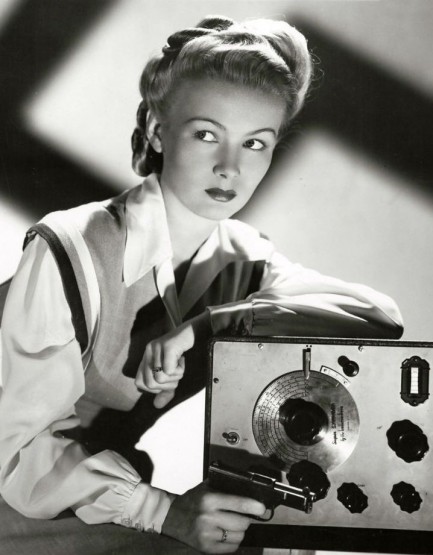
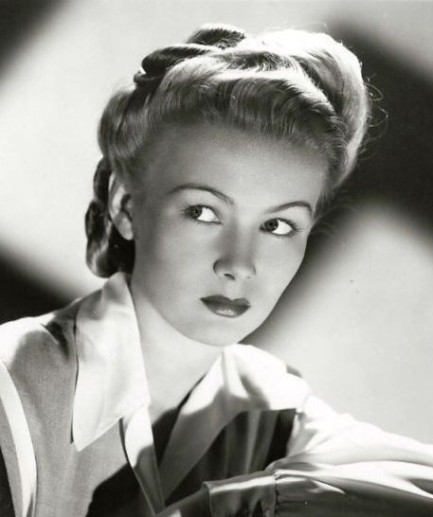
This promotional photo of Veronica Lake was made for her 1944 war thriller The Hour Before Dawn. It's the second promo from the film we've shared. It's hard for us to even conceive of Lake apart from her three major noirs This Gun for Hire, The Blue Dahlia, and The Glass Key, but she made more than thirty other movies we're guilty of not seeing. We'll remedy that soon.
| Vintage Pulp | Jul 22 2021 |

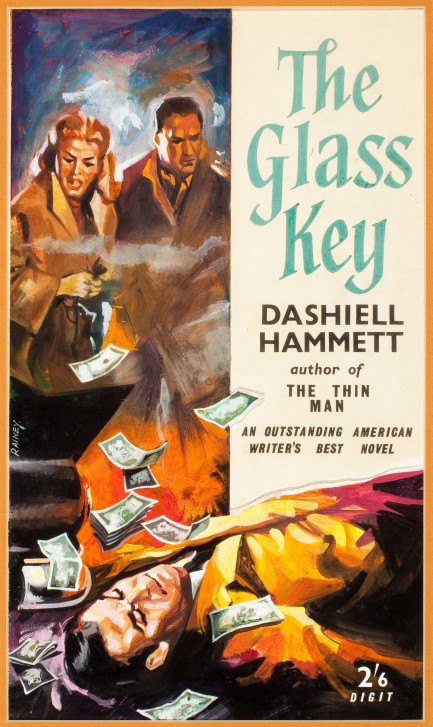
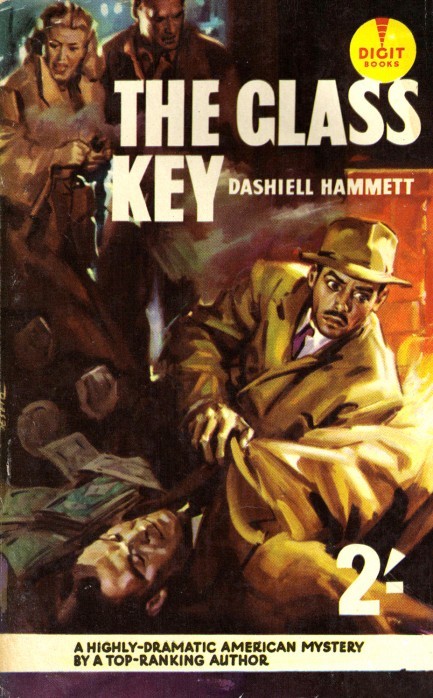 The phenomenon of vintage illustrators copying each other is a subject of interest and bafflement to us. We've talked about it a lot. When it happens, usually it's a great illustration being copied by an anonymous artist of far lesser ability. Other times, though, it's two top level artists painting the same piece. We assume these are initiated by the copyright holders, whether movie studios or publishing houses.
The phenomenon of vintage illustrators copying each other is a subject of interest and bafflement to us. We've talked about it a lot. When it happens, usually it's a great illustration being copied by an anonymous artist of far lesser ability. Other times, though, it's two top level artists painting the same piece. We assume these are initiated by the copyright holders, whether movie studios or publishing houses.
Today we have an interesting example from the literary world. In 1962 Enrico de Seta painted a brilliant cover for a Digit Books edition of Dashiell Hammett's classic mystery The Glass Key. The same year, amazingly, Digit commissioned another, almost identical cover from illustrator Dan Rainey. You see it at top, with the de Seta cover underneath. We also have de Seta's piece in our usual pixel size, here, from a post back in 2014, so if you're on a mobile device feel free to click over there for more resolution. De Seta originated this tableau, so we give him more credit, but it's great work from Rainey too, even if it's almost a copy. We'll show you more from him later.
| Vintage Pulp | Jun 15 2021 |

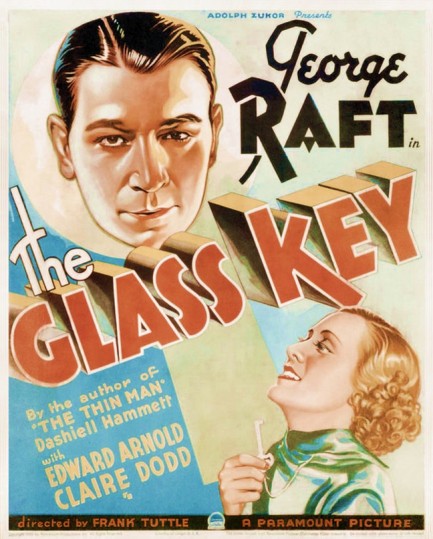
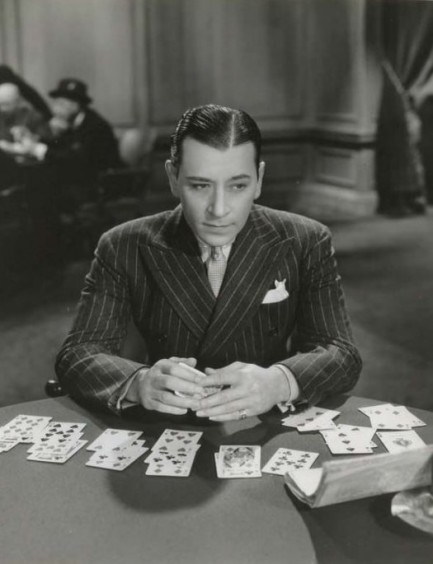
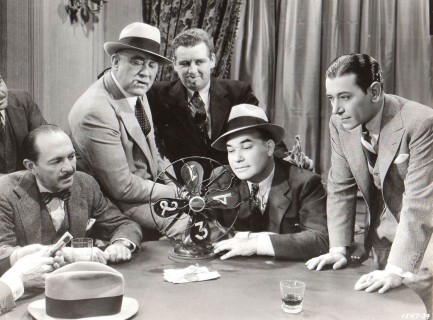
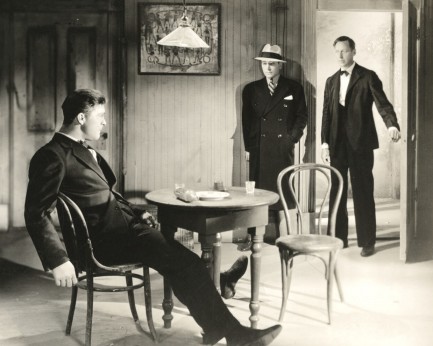
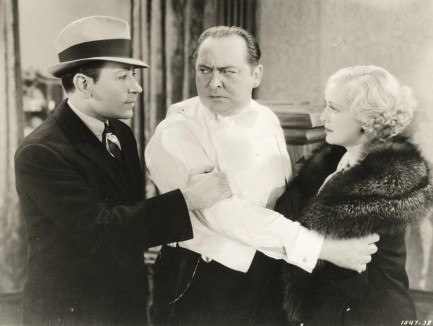
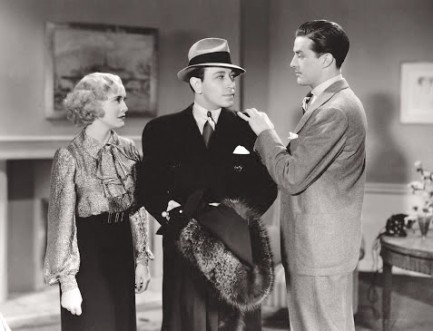
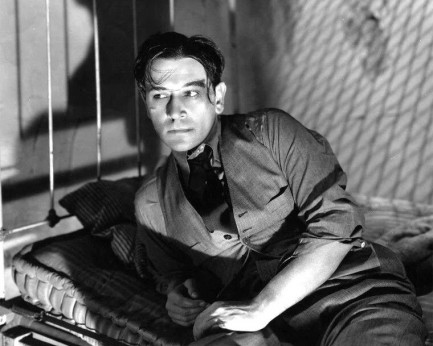
| Vintage Pulp | May 7 2015 |

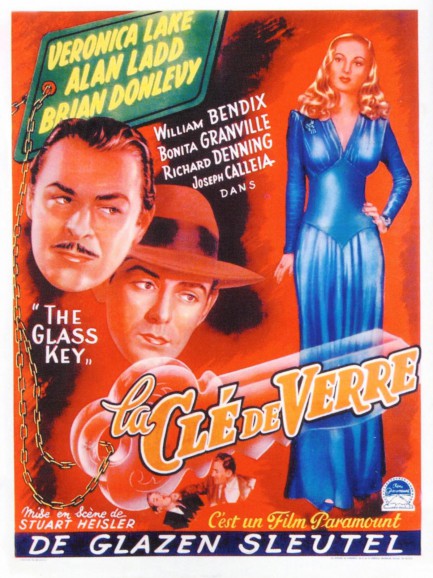
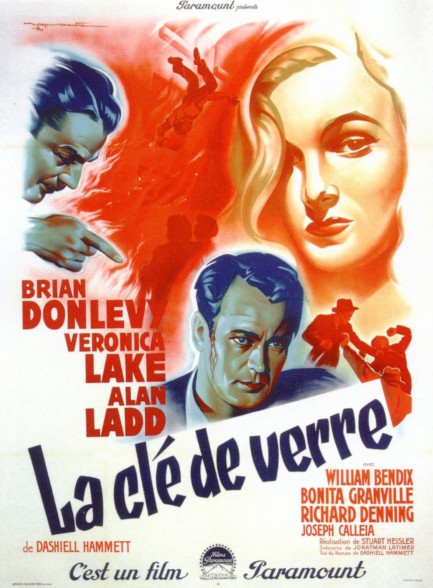
Above is French poster art for La Clé de verre, aka The Glass Key, the second Hollywood adaptation of Dashiell Hammet’s 1931 novel. We’ve shared other Glass Key materials, but never talked about the film. Suffice to say this Alan Ladd/Veronica Lake vehicle is excellent—much better than This Gun for Hire, which starred the same beautiful pair (Ladd and Lake appeared together in seven movies). Complicated, engrossing, and liberally spiced with excellent action and Hammett’s wit chanelled through Jonathan Latimer's screenplay—“My first wife was a second cook at a third rate joint on Fourth Street”—The Glass Key is mandatory viewing. It’s also interesting for its cynical look at American politics, portrayed as corrupt, built on lies, and fueled by legalized bribery. That much hasn’t changed. The first Glass Key was made in 1935 with George Raft in the lead, but this remake from 1942 is the one to watch. Its French premiere, delayed for years due to World War II and its aftermath, was today in 1948.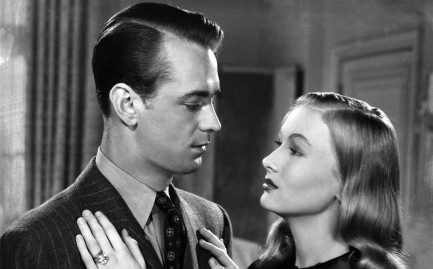
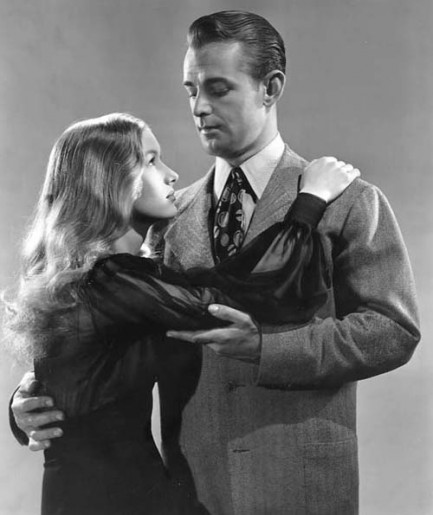
| Vintage Pulp | Oct 15 2014 |

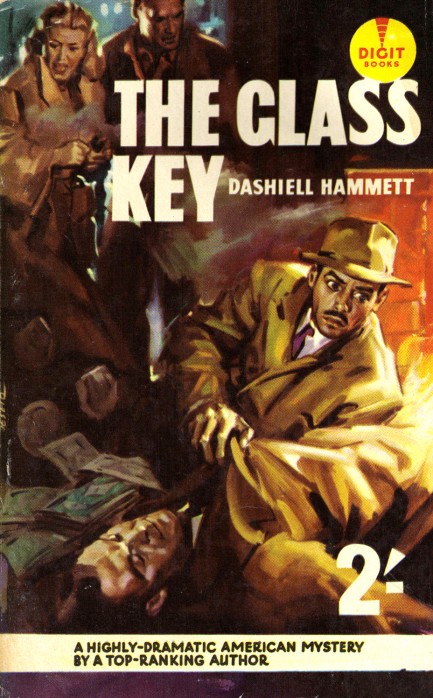
Alan Ladd, Brian Donlevy, and Veronica Lake’s film noir The Glass Key, which was Hollywood’s second try at Dashiell Hammett’s novel, premiered this month in 1942. To be exact, it opened yesterday in New York City and throughout the U.S. on October 23. The poster most often seen online is the theatrical release version we showed you several years ago, but alternates were produced and two of them appear below. What we really wanted to share, though, is this great paperback cover from UK-based Digit Books. It’s from 1961 and features the art of Italian illustrator Enrico de Seta, who we’ve mentioned before. If you haven’t watched The Glass Key we recommend it, and if you haven’t read the book, just know that it was Hammett’s personal favorite.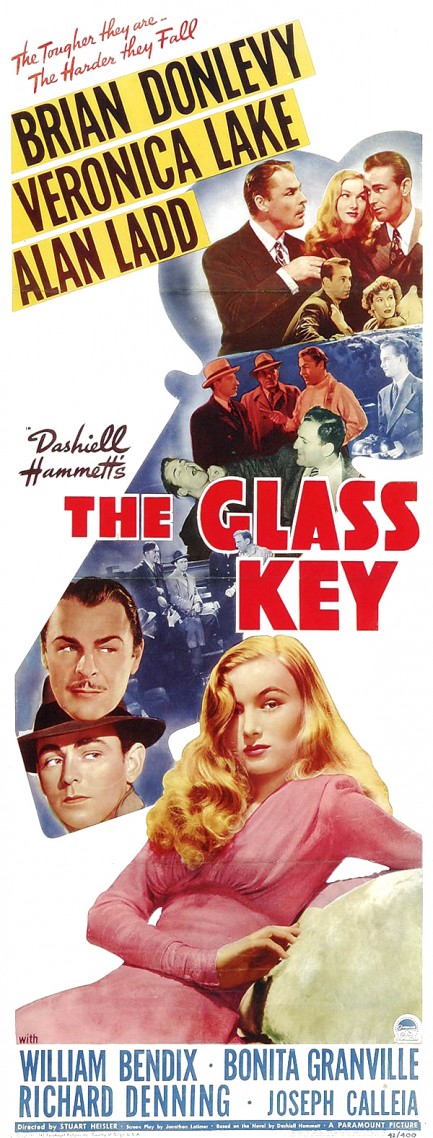
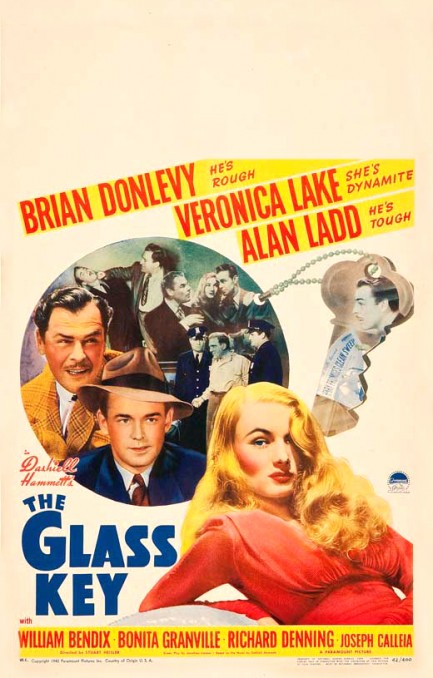
| Vintage Pulp | Jan 10 2011 |

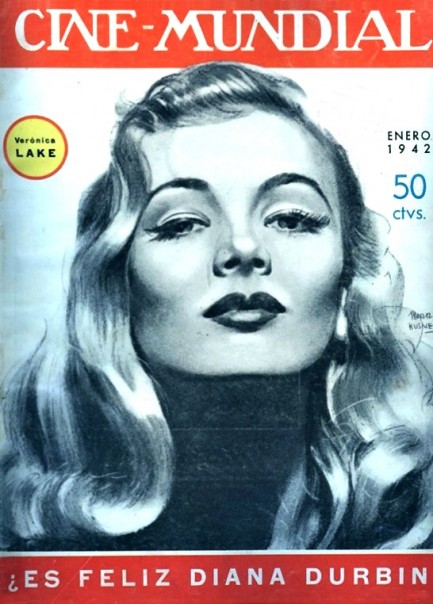
Above, a cover of Cine-Mundial, published in Argentina in January 1942, with an illustration of Veronica Lake by Morr Kusnet. Lake was just twenty years old at the time, on the cusp of a big year that would see her star with Alan Ladd in two of her best films—This Gun for Hire and The Glass Key.
| Vintage Pulp | Oct 23 2009 |

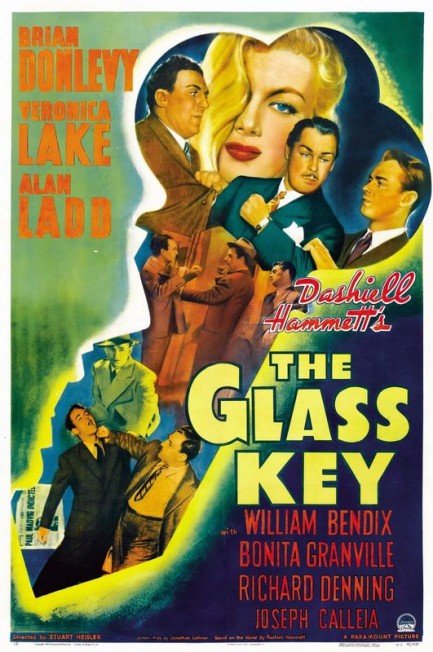
American promo art for The Glass Key, based on a Dashiell Hammett novel and starring Brian Donlevy, Alan Ladd, and Veronica Lake. We’ll have more on this slightly overlooked film noir later, but for now we’re showing you the poster because it’s great, one of the better promos of the period, we think. The Glass Key premiered in the U.S. today in 1942.




































































